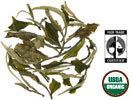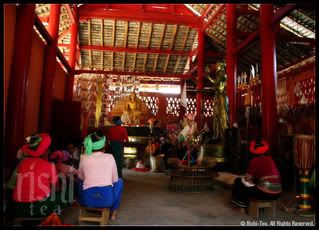
I just made and exciting new discovery. I am a very avid tea drinker (along with Zak). I usually have about two pots a day - and it has to be loose leaf tea. That is the only way to drink it. It just tastes sooo much better. It can be like having a dessert. No need of sugar or milk - just enjoy the tea. It's like drinking wine. Every batch tastes slightly different.
To my dismay, I have only been able to locate three kinds of Fair Trade tea in Edmonton - Green Tea, Earl Grey Tea and Ceylon tea. Too bad they're all caffinated. I have issues with caffine, one pot of tea can make me dizzy and a little sick. So today I searched the net and discovered a brand called "Rishi Tea". They deal with premium tea and work directly with the tea growers and the creators of the tea flavours. They have ventured into Organic flavours and now they are starting to make Fair Trade varieties. They realized that an important part of working with the tea producers is sustaining the communities that grow the tea.

There is a community in south-western China that they work with. It is a very remote community and their whole community relies on the production of tea. It is a tradition that has been passed on in their community for over a 1000 years. The tea they grow is also deeply intertwined with their religion and every aspect of their lives. Here is a picture of one of the Fairly paid workers harvesting the tea on the organic farm.
The Rishi site gives detailed "Travelogues" of where they go to find the teas they sell. In a description of this Chinese community they describe the benefits of paying this community fair trade prices:
Social premiums generated by Rishi Tea sales of Jingmai Mangjing's tea have helped the local people to establish a library, a Bulang cultural center, an agricultural training program for villagers, road improvements and water purification. Recent Fair Trade premiums generated by Rishi's Ancient Tree Teas have supported the first two students from Mangjing Village to attend university, as well as the development of an herbal tea processing initiative to diversify cash crop biodiversity. Rishi's Fair Trade Ancient Tree Tea program encourages the conservation of the old tea trees by supporting the local hill tribes who are their natural protectors.

Fair Trade has enabled this community to survive and also to preserve their culture. Now that's some tea that I can feel good about drinking. Here is a picture of the cultural centre that the fair trade premiums helped them to build.
I will definitely be making most of my tea purchases from this company. Maybe one day I'll even start my own Fair Trade tea shop with them!!
Check out their website! They give a lot of information that's really interesting. http://www.rishi-tea.com/

